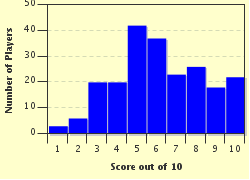Quiz Answer Key and Fun Facts
1. Elsie brought along a barm cake, made from a traditional Lancashire recipe her grandmother taught her. Its name comes from the leavening agent used to make these rolls, which gives them a distinctive taste. Which of these is it?
2. Jack arrived with a sample of a rock that he was able to float in the water of the fish tank (which did not impress the clown loach) because it was so full of air holes, as you can see from the picture. What kind of rock did he choose for his demonstration?
3. After he pulled his rock out of the fish tank, Jack showed us that it had a piece of biotite embedded in it. What is the more common name for this mineral?
4. Marcel brought us some rolls that he says are often called 'love knots' in Italy because of their shape, which is usually distinctly phallic. Given that name, it is surprising to find that a main ingredient is likely to discourage subsequent kissing. Which of these is it?
5. For my contribution, I took everyone to look at the feature wall we built in the backyard, and told them that it was made of a common felsic intrusive igneous rock composed of a mixture of feldspar, quartz, mica and amphibole. After giving the jargon description, I told them that the interesting bit is the fact that this rock is often radioactive, sometimes dangerously so. What material did we use to build our wall?
6. Marek brought along some rolls that he said are called kajzerka in his native Poland, although they originate in Austria, where they are called Kaisersemmel. What is the English name of this crusty roll?
7. Teodora's contribution to the rock and roll party was a bread roll from the Czech Republic whose name comes from the fact that French troops stationed in Prague during the 18th century called them 'panne d'Allemagne' (German bread). What is their current Czech name?
8. Branko showed us all this sample of brown coal, and explained that it represents one of the stages of development of coal from ancient plant material. What did he tell us is the more scientific name for brown coal?
9. Agata considered her sample of calcite to be of interest because it is commonly found in her native Slovenia, where the fact that it dissolves in acidic water has led to the formation of karst topography with extensive underground caves. What is the chemical composition of calcite?
10. Arnaldo brought along some ciabatta, which I always thought of as a traditional Italian bread. He informed us that it was invented by his namesake, Arnaldo Cavallari, in a small town near Venice in what year?
Source: Author
looney_tunes
This quiz was reviewed by FunTrivia editor
trident before going online.
Any errors found in FunTrivia content are routinely corrected through our feedback system.


